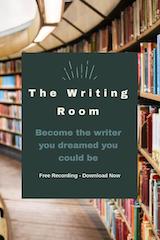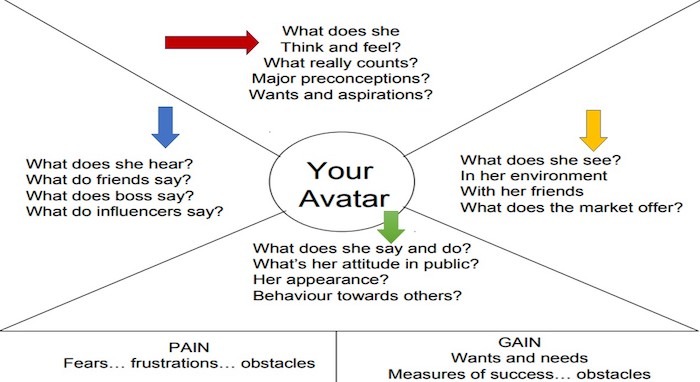How to write a book, and become a thought leader in your niche
How to get started writing a book and become a thought leader (almost overnight!)
How To Get Started Writing a Book
Have you ever thought about writing a book?
Many bloggers have entertained the idea. I know I have!
After all, if we added up all the words on a website like IncomeDiary we would have enough content to write several books!
But what kind of book should you write…
- a business book?
- a self-help book?
- an inspirational novel?
- a fantasy novel?
- the list goes on and on!
For this article, however, we will focus on two types of book: Business and Self Help.
Although of course much of what we reveal applies to all types of books.
The Best Way To Get Started Writing a Book
Is this you…
You’re an expert in your industry?
You have worked for years in your field, know how to get results, and you want to reach more people…
But you’re frustrated because you don’t know where to begin writing a book, what material to put in, or how best to organize it…
If you like the idea of writing a book but can’t find the time to write… then this post was written for you.
But first, an acknowledgment and a free recording…
To help with this task I have enlisted the help of my good friend Clive Cable. Clive has written 10 business/self-help books. (4 ghostwritten, six of his own). He is my book writing coach!
Clive has also made available a Special Recording which will help you get started with writing a book – Free of charge! (see below)
The Writing Room – Free Recording
This recording uses advanced NLP language patterns known as “Multiple Embedded Metaphors.” The benefit of this technology is that you only need to listen to it once in order to get the full benefit.
This helps your unconscious mind remove any limitations you may have about writing your book. And motivate you to get started and keep going until your book is finished.
Request A Copy Now!
Overcome writer’s block, beat procrastination, and be more creative.
Become the writer you dreamed you could be!
Clive’s books include:
- Build a Better Brain, Live a Better Life.
- Inbox Income.
- Fret Memory.
- The Seven Health Habits of Happy People.
- Influence Intelligence.
- Stress-Free in Seconds.
How to Become a Thought Leader by Authoring Books!
Coaches, consultants, personal trainers, and business experts are becoming Thought Leaders by authoring a book.
You can join them!
And we are including a free resource that will…
- End procrastination.
- Help you find the time to write.
- Give you ideas on what to write.
- And motivate you to write every day.
But first, let’s look at the 5 RULES of WRITING…
What you need to know before writing a single word.
Rule# 1. Don’t try to appeal to “everyone.”
Your book must appeal to one person.
And ONLY one person.
Why?
Think about it.
When someone buys a book they read it alone.
It is an intimate conversation between you and your (one) reader.
Go to a library and you’ll find individual people reading individual books.
One reader – one book.
Before you write a book ask…
- Who is my ideal reader for this book?
- Who will it help the most?
Here’s how I answer the question “who is my ideal reader for this book?”
When you intimately understand your reader’s main problem your book becomes irresistible to him.
To answer the question, “who will it help the most?” Clive Cable walks his clients through “The Empathy Map.”
Clive and I have been using the empathy map for over 15 years, and I find it to be a reliable tool to uncover the problems and desires your reader has.
I have a confession to make before we go on.
Because I’ve done this over 100 times I now rely on intuition to guide me to the correct answers for my clients.
Also, when writing your book it will be useful to give your reader a name that characterizes him or her. Then find an online stock photo that represents your reader.
You can then print this out and put it in a frame next to your laptop.
This makes it more personable.
It’s like you’re having a conversation with your reader.
I know some authors who even go as far as having a small “doll” that represents their reader.
Rule #2. Your book must solve a pressing problem for a reader.
What is your reader’s biggest pain point?
When you can articulate their problem better than they can. They automatically believe you have the best solution.
Keep in mind, etch this in your memory and recall this statement, “problems have price tags.”
Rule #3. Make one big claim.
In the book “The One Thing” by Gary Keller you’ll find the idea behind the One Thing.
And that is, “What one thing could I do that by doing so makes everything unnecessary?
To paraphrase this we would say, “What one problem could you solve for your client in your book that would make the biggest change in his or her life?
Rule#4. Size doesn’t matter.
It doesn’t need to be a long book. In fact, in today’s world short books win every time. Begin at the beginning and go on until you come to the end is good advice when it comes to determining how long a book should be. And the same applies to blog posts!
People don’t want to be overwhelmed with data and information.
Because of social media people have shorter attention spans than ever before.
A shorter attention span requires and demands a shorter book.
You can charge more for a short book as long as it’s entertaining, fast-paced, and clear.
Your book is an intimate one-on-one conversation as if you were talking to your reader in a coffee lounge.
A lot of times when people will pay you big money to come over to them and implement what you wrote about.
Think of your book acts as a master marketer. A published book brings you clients who are willing to pay you much higher fees.
In some cases, you can even double what you’re currently charging.
Rule#5. Introduce your Unique Mechanism.
What is it you do for your clients, that is unique to you?
We call this your unique mechanism.
History 101. ?
Rosser Reeves coined the term “Unique Selling Proposition” in the 1940s.
He ran an ad agency and came up with USP slogans like, “Melts in your mouth not in your hand.” I believe it was for the candy known as M&M’s.
His book “Reality in Advertising” published in 1961 explained the USP in great detail.
Every business has a proposition to make, but it’s not enough.
It must also be unique.
And even that’s not enough.
There are tons of unique products or services that never turn into a viable business.
The last part of the USP formula is that it must sell.
It is, after all, a “Unique Selling Proposition.”
However, things have changed a lot since the 1940s.
With so much competition around no one really has a USP anymore.
Enter Eugene Schwartz.
One of my hero’s.
Gene was a master copywriter, and in 1966 he published a book called, “Breakthrough Advertising”
In the book, Mr. Schwartz introduced the term, “Unique Mechanism.”
Every top copywriter alive today has studied Gene’s book and they all agree it is by far the best book ever on copywriting.
Nothing surpasses it.
And the term Unique Mechanism is the best way to differentiate you from ALL of your competitors.
An example from one of Gene’s ads.
“Rub away your belly using nothing more than the palm of your hand.”
Can you imagine lying down, rubbing your stomach, and losing all the weight you want?
That’s a unique mechanism!
In your book have lots of diagrams that show off your “Unique Mechanism.”
I Cloves’s latest book, “The Seven Health Habits of Happy People,” he has over 20 diagrams.
And his unique mechanism is my “Health Bank Account.”
It’s like an ordinary bank account in that if you go overdrawn you pay for it with the tag line, “If you don’t take the time out to be well, then you have to take the time out to be ill.”
As you imagine your book think…
- Problem
- Solution
- Process (Unique Mechanism.)
How does a reader experience a book?
They use a book as a screenplay for a movie that’s going to play inside their mind.
In that movie, they are going to play two parts.
One way is them as a student.
The other is them as a teacher.
How much should you put in about yourself?
Just enough so the reader knows who they are being when they are being you.
We will cover your “back story” later and why it is vitally important that you have one.
Planning your book Part One.
Your book can include as many or as few as you think necessary.
- Title page.
- Copyright page.
- Acknowledgments/dedication
- Endorsements (if appliable).
- Table of contents.
- Lead Magnet – Call to Action page(s) – in the front of the book.
- Hyperlinks throughout (especially the ones that grow your email list.
- Images.
- Graphs/tables.
- About the author.
- Appendix (if applicable).
- Review request page.
- Create a back cover brief (enticing) description. 250 words or less.
- Endorsements – if you have them.
- Short story “about the author.”
- Bar code and ISBN.
Planning your book Part Two.
Write your book idea in the middle of a page and draw a circle around it.
Draw lines around the circle. Put points you want to make.
Stories you want to tell.
Everything you can think of about the book you want to write.
It doesn’t matter about the order of things.
Do a brain dump.
Keep putting down ideas and concepts that are in your head.
Arrows, phrases, words.
Who cares about spelling, just get it out on paper.
Get creative.
Write the obvious and the ridiculous if they come to mind.
This is not an outline. It’s a brain dump.
30 minutes should be enough.
It will be messy but stay with it.
Over the years I have found my clients prefer to have me guide them in person through this process.
One reason is, it gets them started quickly and easily and makes them feel like their book is becoming a reality.
Converting Your Book Mind Map to Book Outline
#1 Organize your mind map into groups or sections.
Put any ideas that seem to go together in a group.
#2 Organize these groups to create the sequence for your book.
#3 Divide the groups into individual chapters.
The scary stuff…
Pick a date when your rough draft will be finished.
Then tell everyone you know that date. (get accountability!)
I admit this is scary and hard to do alone.
But you can do it. Seek help from a professional book coach like Clive Cable if you need it.
It doesn’t have to be me or Clive. Just choose someone who has written at least three books. That way you know that they know what they are talking about.
Planning your book Part Three.
You will need at least 10 colored 5×7 lined index cards.
And 100 white-lined index cards.
And something like Blue tac, for attaching the cards.
The colored cards are for the title of your book and the chapter headings.
Choose a working title that reflects what you’re writing about.
We’ll create a title later.
For now, you’ll need a working title.
You want to think about the transformation you are making in your reader’s life.
Answer the question, “What do you want your reader to become?”
For Starbucks, it was “a coffee connoisseur.”
For Netflix, it’s a “movie aficionado. “
When I’m with a client it usually takes around 10 minutes to answer this question in a meaningful way.
The reason is simple.
It’s hard to read the label when you’re inside the bottle.
Having an unbiased set of eyes makes answering this question as easy as picking cherries from a tree.
Now write out your milestones.
Every customer goes on a journey with you to solve their problem.
Most people’s problems are complicated.
And there are no simple solutions to complicated problems.
However, you must make your reader THINK there is a simple solution.
The adage that comes to mind is, sell them what they want, but give them what they need.
You can break down your client’s complex problem into bite-sized chunks.
These chunks are called “Milestones.”
Usually, there are 6-10 milestones someone must complete to be transformed.
What is the first milestone on their transformational journey?
Where must they start?
What do they need to do next?
Break your reader’s journey down to the actual steps they must take to achieve their goal.
Your Book Chapter headings.
Now all you do is take each milestone and create a chapter heading for each one.
Then write one chapter heading on one colored 5×7 index card.
In other words, each chapter is one milestone closer to its final goal.
The first colored card is for the working title for chapter 1. “I’ve been where you are now.”
The second colored card is for the working title for chapter 2. “why I’m the one to solve your problems.”
The third colored card is for the working title for chapter 3, “Summary of my Unique Mechanism.”
Coming up with your unique mechanism takes a bit of thinking time.
That’s why people hire Clive Cable to help them through this complicated stage.
The next six chapters are the six milestones to solving your client’s problem.
It’s one milestone for each chapter.
These six chapters are your unique mechanism explained.
Give away as much as you can.
Use this format for these six (unique mechanism) chapters.
Why you should care about this.
Here is the proof that backs up everything I’m saying.
Here are the step-by-step actions you need to take.
Here’s how your life will change once you have taken the actions I suggest.
Once again, the collective name for your milestones is your “Unique Mechanism.”
To find the unique mechanism I use the “Interrogation of method” with my clients.
It works every time and it’s what makes your book worth buying.
Without a unique mechanism, your book is like a waterfall going to waste.
To say it another way, if you don’t have a unique mechanism, forget about writing a book.
The second to last chapter heading is, “Should we continue the conversation?”
Here is where you set the stage for a one-to-one conversation with you, either live or on the phone.
The last chapter’s working title is, “The call to action.”
This is NOT the actual chapter title.
It is a reminder to you to invite your reader into a conversation with you.
After all, if they’ve read this far, it makes sense to find out more.
Writing your book recap.
Now you have 11 title cards in total.
One for the working title and 10 for each of the chapter titles.
Now you use your Blue tac and find a blank wall somewhere in your home or office.
Put the working title at the top of the wall in the center.
The colored (chapter headings) cards go horizontally from left to right.
The white cards (page themes) go vertically, from top to bottom under their appropriate chapter title.
Every color card is a chapter heading.
Every white card is a page theme.
(Quick note: If you’re a morning person, research topics of interest in the evening and write in the morning.)
Vice versa if you’re an evening person.
Page themes.
You’ll need 10 white-lined 5×7 cards for each chapter. You can add more or take away what you don’t need.
Within each chapter, there are several mini-steps to achieve the milestone.
We call these “page themes.”
For chapter one working title “I’ve been where you are now.”
This is where you tell your reader your back story.
The story of how you were once like them. Then how you overcome the same problem they have right now.
You want one card for each of these points.
Your problem or challenge. (It must be the same one they are going through right now otherwise there’s no connection between you and your reader.)
Internal struggles. (How did this struggle make you feel inside? What emotions were there? Like, anger, frustration, angst, etc.)
External struggles. (What observable things happened in your business? Did you lose everything? Did your key employee quit? Did you have an unexpected tax bill?)
What was your change event? (At what point had you had enough? You said to yourself I draw a line in the sand. This is as far as I’m willing to go.)
What was the spark? (The catalyst, the discovery, the ah-ha moment, etc..)
Who was your guide? (Who helped you? Who was your mentor? Was it a course, seminar, book?)
What was the result? (How did you finally manage to solve the problem? Did you create a fool proof system that even you couldn’t screw up?)
Chapter two working title, “Why I’m qualified to solve your problem.”
You will need case studies, testimonials, endorsements.
Later in this course, you’ll get “fill in the blank” testimonials you can send to your clients.
This will make your testimonials credible and believable.
Chapter 3 working title, “Summary of Unique Mechanism.” (Milestones.)
These I place under the chapter title heading “Chapter 4, Milestone 1.”
I do the same for each milestone.
Chapters ten and eleven are laid out differently.
(Please note that the second to last chapter in your book has the title, “Should we continue this conversation?” and the last chapter in your book has the working title “What happens next.”)
When you’re done your wall should have around 160 cards on it and if you’re anything like me, most of your Blue tac has been used!
You now have a map of your book.
A visual representation.
Now you’re going to discover the most amazing strategy that keeps you motivated to write every day.
Welcome To The Writing Room
A Free Recording From Clive Cable
By now you’re probably overwhelmed. And that’s to be expected.
We’ve covered a lot in a short time.
And to make matters worse Clive Cable is not there in person or on the phone to guide you through all this.
But don’t worry, we’ve got your back.
Clive has created a special recording called “The Writing Room”.
This recording uses advanced NLP language patterns known as “Multiple Embedded Metaphors.” This creates a metaphor-induced trance which means you only need to listen to it once in order to get the full benefit from it.
It will help you get started and keep going.
This recording normally costs $49.00 but you can get it for free by requesting it below.
Click Here To Request A Download Link
On the recording, you’ll hear Clive’s voice guiding you in a relaxed way to begin your writing journey.
- You will overcome writer’s block.
- Beat procrastination.
- Find enough time in your day to write. (Hint: You only need 20 minutes.)
- Find creative ideas to express yourself clearly.
- Have the confidence to write with passion about what you do.
- And more.
This special recording is only 25 minutes.
You only need to listen to it once because Clive uses memory techniques to embed the ideas in your mind.
Remember Normally $49.00 – but yours for FREE when you join below!
Click Here To Request A Download Link
Then you’ll get an email with a download link along with instructions on how to get the best out of this recording.
During the recording, you’ll imagine a special place to do your creative writing.
It’s a place where you “make-believe” you’re an experienced writer.
You’ll have the exact same experience Clive had when he started 32 years ago.
But you won’t have to wait 32 years to be an author who can write a world-class book.
It is an effortless way to enjoy being a recognized thought leader almost overnight.
Related Book Writing:
7 Secrets To Writing A Best Selling Book That Sold 2 Million Copies!
How To Write a Blog Post That Gets Lots of Traffic
Finally – an interesting fact about writing books:
More than half of Americans think they’ve got a good idea for a book in them, but most have never attempted to write one. A recent survey of 2,000 U.S. respondents reveals just 15 percent have actually started writing a book and a mere six percent have gotten halfway through.
In what percentile will you fall?
Author Bio:








